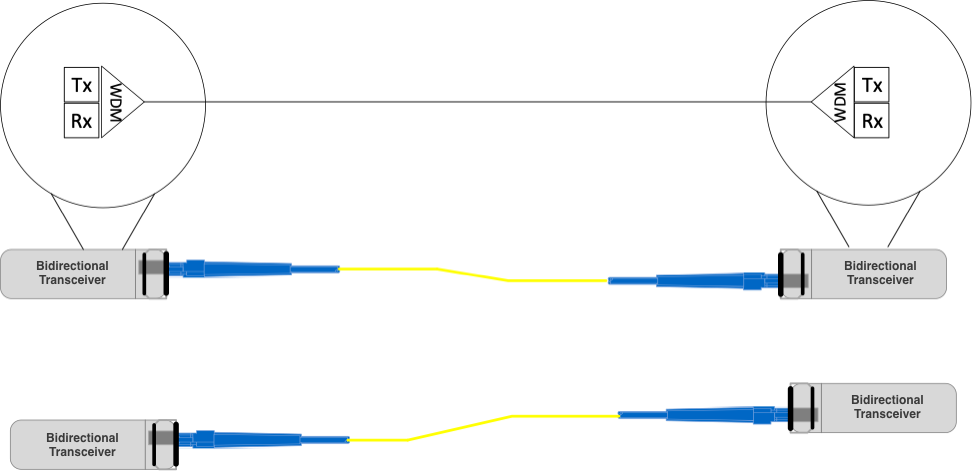Bidirectional Transceivers
The simplest and most cost-effective solution for increasing utilization of existing fiber infrastructure are Single-Fiber Bidirectional Transceivers. Bidirectional, or “Bidi”, transceivers deliver both the transmit and receive portions of a fiber optic connection on one fiber. Standard transceivers deliver fiber optic connections over a fiber pair, with one fiber for transmit and one for receive. Single fiber bidirectional transceiver technology is intended for single-mode fiber infrastructure.
Bidirectional connections are comprised of a ‘Downstream’ and ‘Upstream’ pair that transmit and receive at different wavelengths. Each bidirectional transceiver uses internal WDM to combine the transmit and receive wavelengths on to a single fiber.

Standard Duplex Transceiver – One fiber for Transmit, One for Receive, one connection over a fiber pair.

Bidirectional Transceiver – One fiber for Transmit, One for Receive, two connections over fiber pair.
In conclusion, bidirectional transceivers offer a plug and play solution to maximize existing fiber optic infrastructure. Bidis transmit and receive at different wavelengths over a single, single-mode fiber, offering the capacity for two connections over a single pair. Bidirectional transceivers are available in standard transceiver form factors (SFP, SFP+ and XFP) and various wavelengths optimized to distance and data rate.




